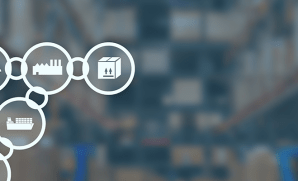Transforming Higher Education: Enhancing Student Experience and Reducing Total Cost of Ownership
Publish Date: December 29, 2023Higher Education is at an inflection point
Higher education is at a critical juncture, demanding immediate change to avert further decline. The prevailing model of higher education is facing challenges that threaten its value and relevance. From soaring costs and affordability concerns to outdated curricula and the urgent need for skills in automation and technology, a multitude of factors contribute to this crisis. Startling statistics from the National Student Clearinghouse Research Center reveal a 4.1 percent drop in enrollment for both undergraduate and graduate students at U.S. colleges and universities in spring 2022 compared to the previous year. This equates to approximately 685,000 fewer students pursuing higher education. Over a span of just two years, the overall decline reaches a staggering 7.4 percent, representing a decline of nearly 1.3 million students. It is time for institutions of higher education to challenge the status quo, reevaluate their approaches, and forge a new path forward.
Digital as a Value Driver
Digital technologies are integral to enriching the student experience and optimizing university operations. By utilizing virtual classrooms, collaborative online tools, data analytics, and artificial intelligence, universities can create a more immersive and efficient learning environment.
SAP is a robust tool capable of dismantling legacy data silos within disparate systems, consolidating critical data, and eliminating redundant manual processes. This transformation ultimately results in heightened operational efficiency. Additionally, SAP harnesses the power of machine learning to automate tasks, simplify administrative responsibilities and free up faculty and staff to focus on more value-added activities.
SAP’s data analytics capabilities provide valuable insights into student performance, enabling a data-driven approach to personalized learning experiences tailored to individual student needs. This method not only saves time and resources but also contributes to the creation of a more engaging, efficient, and cost-effective educational environment.
The Connected University
A connected university involves creating an ecosystem where technology seamlessly integrates with every facet of the academic journey. A future-connected university is not confined to physical campuses; it extends the traditional campus experience into virtual spaces where students, faculty, and resources are interconnected to complete the same functions in new more convenient digital environments.
Virtual Learning Spaces: In a virtual university, students can participate in virtual labs, collaborate on projects in shared digital spaces, attend lectures, and take exams from renowned professors worldwide, all from the comfort of their homes and the devices of their choosing.
Personalized Learning Pathways: Leveraging AI and data analytics, universities can tailor learning experiences to individual student needs. Adaptive learning platforms can identify areas where students may struggle and provide targeted support, ensuring a more personalized and effective education.
Digital Student Services: A connected university streamlines administrative processes through digital student services. From enrollment to graduation to alumni services, students can access a centralized platform for course registration, financial aid applications, and career services, simplifying their academic journey and keeping them connected to the institution well after they’ve graduated.
Smart Campus Infrastructure: IoT-enabled smart campuses enhance operational efficiency. From smart classrooms that adjust lighting and temperature based on occupancy to location-based services guiding students to resources on campus, a connected university optimizes resource utilization and improves the student experience.
SAP HER Solutions: Soaring Higher
SAP’s Higher Education and Research (HER) solutions are designed to meet the unique challenges higher education and research institutions face. This integrated suite of solutions addresses critical aspects such as student enrollment, student engagement, faculty and professional staff satisfaction, academic research, and institutional operations.
Student Lifecycle Management: SAP HER provides a comprehensive platform for managing the entire student lifecycle. From recruitment and admissions to graduation and alumni engagement, the solution streamlines processes, ensuring a smooth and cohesive experience for students and faculty.
Faculty: For faculty, leveraging SAP and digital tools becomes imperative for teaching, collaboration, and research endeavors. In this digitally interconnected environment, faculty members experience enhanced communication through online platforms, streamlined administrative processes through automation, and the ability to harness data analytics for personalized student engagement. The digital campus permeates an ecosystem where faculty can explore innovative teaching methodologies, conduct research with unprecedented access to information, and engage in real-time collaboration with peers globally.
Research Excellence: For universities at the forefront of research, SAP HER supports advanced research management. This includes tracking research grants, managing collaborative projects, and ensuring compliance with regulatory requirements.
Institutional Efficiency: By consolidating data and disparate systems, SAP HER enhances institutional efficiency and provides industry best practices. Whether it’s financial management, human resources, or procurement, the solution provides a unified, scalable, and flexible platform for streamlined operations that help institutions lower operating costs, improve enrollments, and even increase retention rates for alumni and faculty.
Lowering Total Cost of Ownership (TCO): Balancing Innovation with Cost Efficiency
While investing in digital transformation is important, universities must also address the need for lowering Total Cost of Ownership. Achieving this balance involves strategic decision-making and leveraging technology to optimize operational costs. Let’s look at four ways Higher Education and Research institutions can ensure this need is met head-on:
- Cloud Adoption:Moving to a cloud-based infrastructure reduces your overall IT ecosystem footprint and the burden of maintaining extensive on-premise IT systems. SAP HER cloud solutions offer scalability, flexibility, and cost-effectiveness allowing universities to pay only for the resources they use and eliminating the need for those they don’t.
- Process Optimization:Implementing best practices and reimagining existing processes can lead to significant cost savings and operational efficiencies. By digitizing and automating routine administrative tasks, universities can eliminate redundant tasks, automate manual processes, digitize paper processes, and redirect resources toward value-added initiatives.
- Strategic Procurement:Collaborating with a transformation partner, who can guide your journey and adopting a strategic procurement approach can result in significant cost savings. Centralizing purchasing decisions and leveraging economies of scale contribute to Total Cost of Ownership savings.
- Energy Efficiency:Embracing sustainable practices, including energy-efficient campus infrastructure, not only aligns with environmental goals but also contributes to long-term cost savings. Higher Education and Research institutions need a strategic blend of innovation and cost efficiency, with an emphasis on sustainability. Cloud adoption, for instance, a key component in this pursuit, reduces the IT ecosystem footprint and offers scalability, flexibility, and cost-effectiveness. SAP HER solutions have enabled universities to pay only for utilized resources, promoting a sustainable and economical approach.
YASH Technologies offers a comprehensive platform coupled with in-depth domain knowledge, advisory-led consultative services, and technology expertise tailored to the unique needs of higher education institutions. By envisioning and implementing a connected university and concurrently addressing TCO concerns through strategic initiatives, we help universities adopt resilient and innovative practices to help them reimagine their educational landscape so that their students, faculty, and staff achieve higher levels of satisfaction that contribute to higher levels of achievement.
















